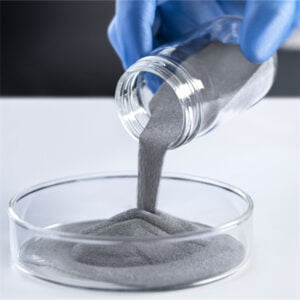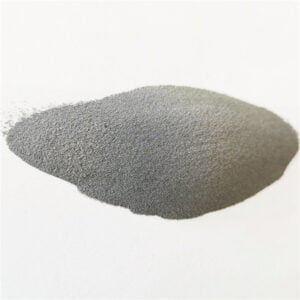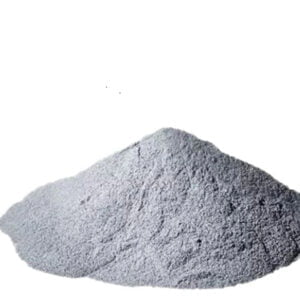porozumění technologii EBM
Obsah
Technologie EBM is an advanced additive manufacturing technology with unique capabilities. This guide provides a comprehensive overview of EBM technology including its working, benefits, applications, system suppliers, and comparison with other 3D printing processes.
Úvod do tavení elektronovým svazkem (EBM)
Electron beam melting is an additive manufacturing technique that uses an electron beam to selectively melt and fuse metallic powder particles in a layer-by-layer manner. Key features:
- Uses an electron beam as energy source to melt metal powder
- Builds parts by selectively melting powder layers
- Typical materials are titanium, nickel alloys, tool steels, aluminum
- Produces fully dense parts with excellent properties
- Supports complex geometries not possible with casting/machining
- Provides design freedom, customization, reduced lead times
EBM delivers excellent mechanical properties, material purity, surface finish, and dimensional accuracy in end-use parts across aerospace, medical, automotive, and other industries.
This guide provides a detailed overview of the EBM process, technologies, advantages, applications, system suppliers, and comparison with other AM methods.

Jak Technologie EBM funguje
Electron beam melting manufactures parts through the following key steps:
EBM Process Steps
- 3D model designed in CAD software is converted to .STL file
- File is sliced into layers and build sequence is generated
- Metal powder is spread evenly on build plate
- Electron beam selectively scans and melts powder to fuse layers
- Build plate lowers and new layer of powder is spread
- Process repeats until full part is built up layer-by-layer
- Unfused powder supports part during build
- Completed part is removed from machine for post-processing
- High energy electron beam provides rapid, precise melting and welding
- Process takes place at high temperature under vacuum for purity
- Unused powder is recovered and reused thereby minimizing waste
Types of EBM Systems
There are two main types of EBM systems currently available:
EBM System Types
| Typ | Popis |
|---|---|
| One beam system | Single electron beam |
| Multi beam system | Multiple parallel beams |
- One beam systems use a single high-power electron beam typically 50-60kW. Build rates are slower due to scanning requirements.
- Multi beam systems utilize multiple beams together for higher speed. Reduces scanning time significantly.
- Single beam power ranges from 3-6kW. Total power in multi beam systems is over 10MW.
- Latest generation multi beam systems dramatically improve build rates.
- Beam control, scanning, and focusing are critical subsystems for precision melting.
Materiály pro EBM
EBM is compatible with a range of metals and alloys including:
Materiály EBM
| Materiál | Klíčové vlastnosti | Aplikace |
|---|---|---|
| Slitiny titanu | Vysoká pevnost, nízká hmotnost | Letectví a kosmonautika, zdravotnictví |
| Niklové superslitiny | Heat/corrosion resistance | Lopatky turbíny |
| Nástrojové oceli | Tvrdost, odolnost proti opotřebení | Nástroje, formy |
| Nerezové oceli | Odolnost proti korozi | Námořní hardware |
| Kobaltový chrom | Biokompatibilita | Lékařské implantáty |
| Slitiny hliníku | Lehká váha | Automotive, structures |
| Slitiny mědi | Elektrická vodivost | Elektronika |
- Titanium alloys like Ti-6Al-4V are most common for critical aerospace components.
- Nickel superalloys excel in high temperature environments like turbine engines.
- Tool steels provide hardness required for long-lasting molds and tooling.
- Biocompatible alloys are used for implants and medical devices.
- EBM supports reactive metals like titanium and aluminum better than laser-based processes.
Benefits and Advantages of EBM
Key benefits that make EBM attractive for production applications include:
EBM Benefits
- Fully dense, void-free parts
- Vynikající mechanické vlastnosti
- High geometric and dimensional accuracy
- Good surface finish and fine details
- Low post-processing requirements
- High purity parts with less contamination
- Less material waste due to powder recovery
- Complex inner geometries are supported
- Combines multiple parts into one design
Vs. Traditional Manufacturing
- Enables lighter, stronger designs not possible with casting or machining
- Consolidates assemblies into single printed parts
- Allows shapes that cannot be molded or forged
- Reduces lead time from months to weeks
- Lowers costs for small batch production
Aplikace EBM
The advantages of EBM make it suitable for:
Aplikace EBM
| Průmysl | Používá |
|---|---|
| Aerospace | Turbine blades, structural frames, rockets |
| Lékařský | Ortopedické implantáty, chirurgické nástroje |
| Automobilový průmysl | Odlehčovací prototypy, zakázkové díly |
| Nástroje | Injection molds, forming dies, jigs and fixtures |
| Energie | Heat exchangers, valves, pumps |
| Elektronika | Shielding, contacts, cooling systems |
- Aerospace extensively uses EBM for lighter, stronger titanium and nickel alloy parts.
- Medical sector leverages EBM’s geometric freedom and biocompatibility for implants.
- Automotive researchers use it to produce lightweight optimized topology designs.
- Conformal cooling channels can be built into tooling for injection molding.
- Oil and gas industry uses it for high temperature, high pressure components.
- Electronics benefit from EBM’s fine details and conductive alloys.
-
 Ti45Nb prášek pro aditivní výrobu
Ti45Nb prášek pro aditivní výrobu -
 Prášek ze slitiny TiNb
Prášek ze slitiny TiNb -
 Prášek ze slitiny TiNbZrSn
Prášek ze slitiny TiNbZrSn -
 Ti6Al4V prášek Kovový prášek na bázi titanu pro aditivní výrobu
Ti6Al4V prášek Kovový prášek na bázi titanu pro aditivní výrobu -
 CPTi prášek
CPTi prášek -
 TC18 Powder : Odemknutí síly karbidu titanu
TC18 Powder : Odemknutí síly karbidu titanu -
 TC11 Powder: Komplexní průvodce
TC11 Powder: Komplexní průvodce -
 TC4 ELI prášek
TC4 ELI prášek -
 Nejlepší prášek Ti-6Al-4V (TC4 Powder) pro aditivní výrobu
Nejlepší prášek Ti-6Al-4V (TC4 Powder) pro aditivní výrobu
Dodavatelé systémů EBM
The major manufacturers providing EBM systems include:
Dodavatelé strojů EBM
| Společnost | Machine Brands |
|---|---|
| Arcam EBM | Arcam A2X, Q20plus, Spectra H, Q10plus |
| Přísady GE | Arcam EBM Spectra L, Arcam EBM Spectra H |
| Freemelt | Freemelt ONE, Freemelt TWO |
| Přísada Wayland | Calder |
- Arcam EBM, now part of GE Additive, is the market leader in EBM systems.
- Other companies like Freemelt and Wayland Additive offer newer-generation multi-beam EBM systems.
- Machine capacities range from 150 mm x 150 mm x 150 mm build volumes to larger 1000 mm versions.
- Latest EBM machines provide automated powder handling and closed-loop recycling.
- Customized parameters and training support is provided for different applications.
Cost Analysis for EBM
EBM production costs depend on:
EBM Cost Factors
- Machine purchase price – $500,000 to over $2 million
- Material powder cost per kg
- Labor costs for part design, operation, post-processing
- Objem výroby
- Build speed and utilization rates
- Spotřeba energie
- Equipment maintenance and overheads
Typický rozsah
- Small parts in Ti-6Al-4V: $20 – 150 per part
- Larger aerospace components: $2000 – 15,000+
- High volume production with multi-beam systems provides lowest costs
Srovnání mezi EBM and Other AM Processes
EBM vs. Other Metal AM
| EBM | Laser PBF | DED | Tryskání pojiva | |
|---|---|---|---|---|
| Materiály | Ti, Ni, Al, tool steels | Ti, Al, steels, Ni | Most metals | Nerezové oceli |
| Hustota | Fully dense 99% | Fully dense 99% | 99% dense | 90-95% dense |
| Přesnost | Excellent, ± 0.2% | Excellent, ± 0.1% | Moderate, ± 1% | Moderate, ± 0.5% |
| Povrchová úprava | Very good, Ra 25 μm | Excellent, Ra 10 μm | Rough as-deposited | Good after sintering |
| Rychlost sestavení | Mírný | Rychle | Velmi rychle | Mírný |
| Náklady na vybavení | Vysoký | Vysoký | Mírný | Nízký |
| Aplikace | Letectví a kosmonautika, zdravotnictví | Letecký a automobilový průmysl | Repair, coatings, large parts | Sériová výroba |
- Laser PBF offers faster build rates and finer resolution than EBM.
- EBM provides excellent material properties with fewer internal stresses.
- Binder jetting is lower-cost but needs sintering for full density.
- DED is rapid but suits large-scale industrial applications.
- Users select process based on materials, quality, speed, and budget needs.
Challenges and Limitations of EBM
Some challenges with EBM include:
- Vysoké náklady na stroje a materiál
- Limited equipment suppliers and service support
- Restricted material selection compared to other AM
- Lower build speeds than laser PBF
- Manipulace s reaktivními kovovými prášky a jejich recyklace
- Post-processing to relieve internal stresses
- Requirement of vacuum environment during builds
Ongoing developments aim to increase build rates, lower equipment costs, expand material capabilities, and make the process more scalable for high volume manufacturing.
Future Outlook for Technologie EBM
Future trends in EBM:
- Faster build speeds with newer multi-beam systems
- Larger build platforms over 500 mm x 500 mm
- Expanded material range including more aluminum and copper alloys
- Improved powder handling and closed-loop recycling
- Software enhancements for design and process optimization
- Reduced equipment costs and wider adoption for end-use manufacturing
- Applications in satellite components, electric transport, tooling, and biomedical sectors
Advancements in EBM systems will expand adoption across aerospace, automotive, medical, electronics, and energy industries.
Key Takeaways on EBM Technology
- EBM uses an electron beam to selectively melt and fuse metal powder particles layer-by-layer.
- Produces near net-shape parts with high material purity, density, strength, and accuracy.
- Titanium alloys, nickel superalloys, tool steels, aluminum alloys are common materials.
- Aerospace and medical sectors are major adopters of EBM today.
- Provides benefits over casting, machining, and other AM methods for complex geometries.
- Multi-beam systems dramatically improve build speeds and scale production.
- Ongoing developments aim to expand material capabilities and lower costs.

FAQs About EBM Technology
Q: What materials can be processed with EBM?
A: Common EBM materials include titanium alloys, nickel superalloys, tool steels, stainless steels, cobalt chrome, aluminum alloys, and copper alloys.
Q: What are some examples of parts made by EBM?
A: EBM is used to manufacture critical aerospace components like turbine blades, structural frames, engine parts. It is also used for medical implants, automotive prototypes, industrial tooling, and more.
Otázka: Jak přesná je EBM?
A: EBM offers excellent dimensional accuracy within ±0.2% deviation compared to design dimensions due to the precise electron beam melting process.
Q: Is EBM faster than metal 3D printing methods like DMLS?
A: In general, laser powder bed fusion processes offer faster build speeds than EBM currently. But new multi-beam EBM systems aim to match or exceed laser PBF speeds.
Q: What post-processing is required for EBM parts?
A: Typical post-processing includes supports removal, stress relieving heat treatment, Hot Isostatic Pressing, and machining or grinding if surface finish requirements are critical.
Q: What is the benefit of multi-beam EBM?
A: Multi-beam systems use multiple parallel electron beams to melt the layers. This provides much faster build rates while retaining EBM material properties.
Q: Does EBM produce porous or completely solid parts?
A: EBM produces over 99% dense, fully solid parts with excellent material integrity and properties suitable for functional end-use in demanding applications.
Q: How is EBM powder recycled?
A: The unused powder can be collected, sieved to remove large particles, blended with fresh powder, and reintroduced into the machine for reuse.
Otázka: Je EBM šetrný k životnímu prostředí?
A: EBM has sustainability benefits from its high powder reuse rates, low waste, and lightweight optimized designs that reduce material usage over the part’s lifecycle.
Sdílet na
MET3DP Technology Co., LTD je předním poskytovatelem řešení aditivní výroby se sídlem v Qingdao v Číně. Naše společnost se specializuje na zařízení pro 3D tisk a vysoce výkonné kovové prášky pro průmyslové aplikace.
Dotaz k získání nejlepší ceny a přizpůsobeného řešení pro vaše podnikání!
Související články

Vysoce výkonné segmenty lopatek trysek: Revoluce v účinnosti turbín díky 3D tisku z kovu
Přečtěte si více "O Met3DP
Nedávná aktualizace
Náš produkt
KONTAKTUJTE NÁS
Nějaké otázky? Pošlete nám zprávu hned teď! Po obdržení vaší zprávy obsloužíme vaši žádost s celým týmem.

Kovové prášky pro 3D tisk a aditivní výrobu
SPOLEČNOST
PRODUKT
kontaktní informace
- Město Qingdao, Shandong, Čína
- [email protected]
- [email protected]
- +86 19116340731















